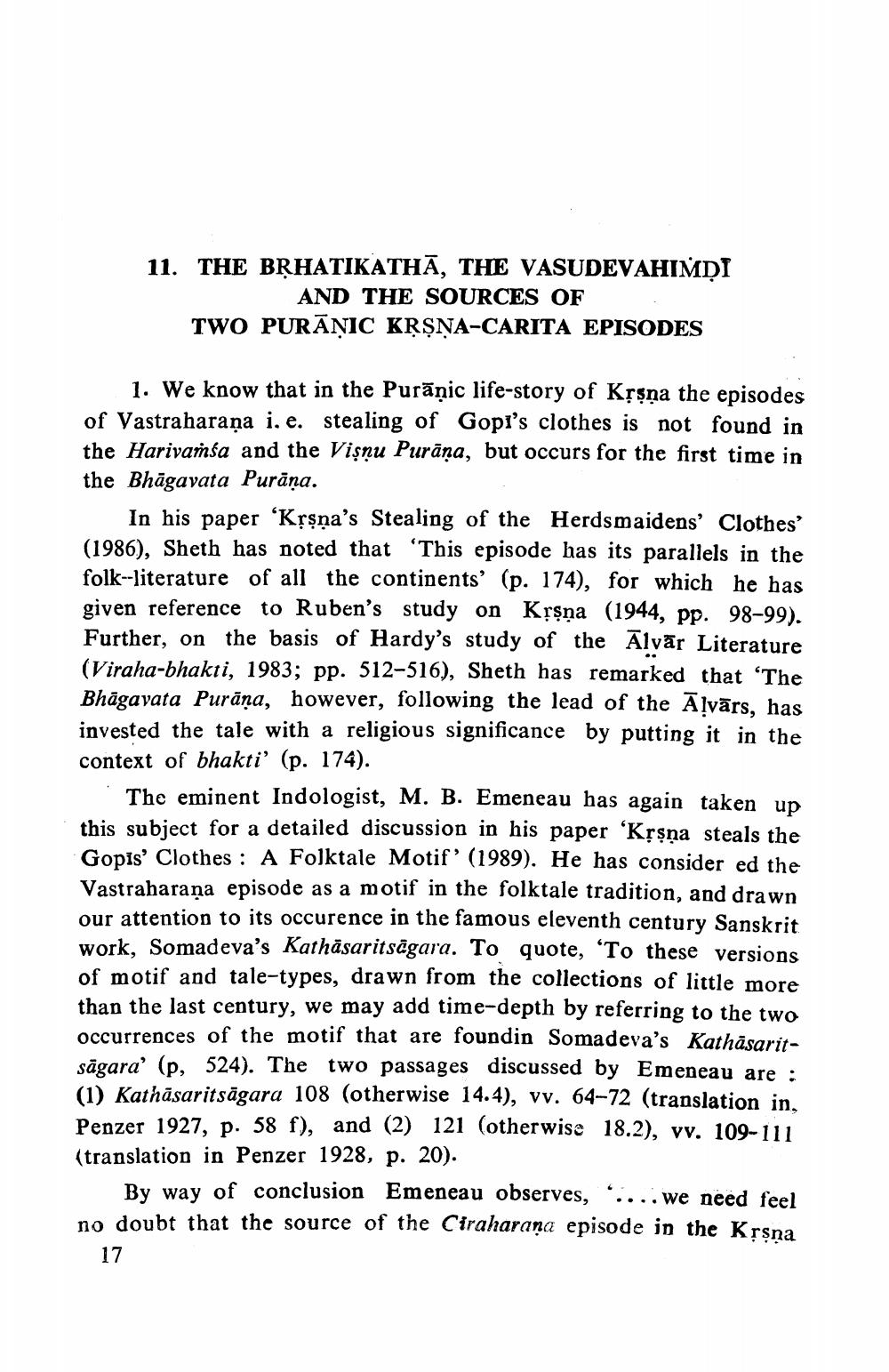________________
11. THE BRHATIKATHĀ, THE VASUDEVAHINDI
AND THE SOURCES OF TWO PURĀŅIC KRŞŅA-CARITA EPISODES
1. We know that in the Purāņic life-story of Kệşņa the episodes of Vastraharaņa i. e. stealing of Gopi's clothes is not found in the Harivansa and the Vişņu Purāņa, but occurs for the first time in the Bhāgavata Purāņa.
In his paper ‘Kșşņa's Stealing of the Herdsmaidens' Clothes' (1986), Sheth has noted that ‘This episode has its parallels in the folk-literature of all the continents' (p. 174), for which he has given reference to Ruben's study on Krşņa (1944, pp. 98-99). Further, on the basis of Hardy's study of the Alvār Literature (Viraha-bhakti, 1983; pp. 512-516), Sheth has remarked that "The Bhagavata Purāņa, however, following the lead of the Ālvārs, has invested the tale with a religious significance by putting it in the context of bhakti' (p. 174).
The eminent Indologist, M. B. Emeneau has again taken up this subject for a detailed discussion in his paper ‘Kșşņa steals the Gopis' Clothes : A Folktale Motif' (1989). He has consider ed the Vastraharana episode as a motif in the folktale tradition, and drawn our attention to its occurence in the famous eleventh century Sanskrit work, Somadeva's Kathäsaritsägara. To quote, ‘To these versions of motif and tale-types, drawn from the collections of little more than the last century, we may add time-depth by referring to the two occurrences of the motif that are foundin Somadeva's Kathäsaritsagara' (p, 524). The two passages discussed by Emeneau are : (1) Kathāsaritsāgara 108 (otherwise 14.4), vv. 64-72 (translation in. Penzer 1927, p. 58 f), and (2) 121 (otherwise 18.2), vv. 109-111 (translation in Penzer 1928, p. 20).
By way of conclusion Emeneau observes, ..... we need feel no doubt that the source of the Ciraharana episode in the Krsna
17




